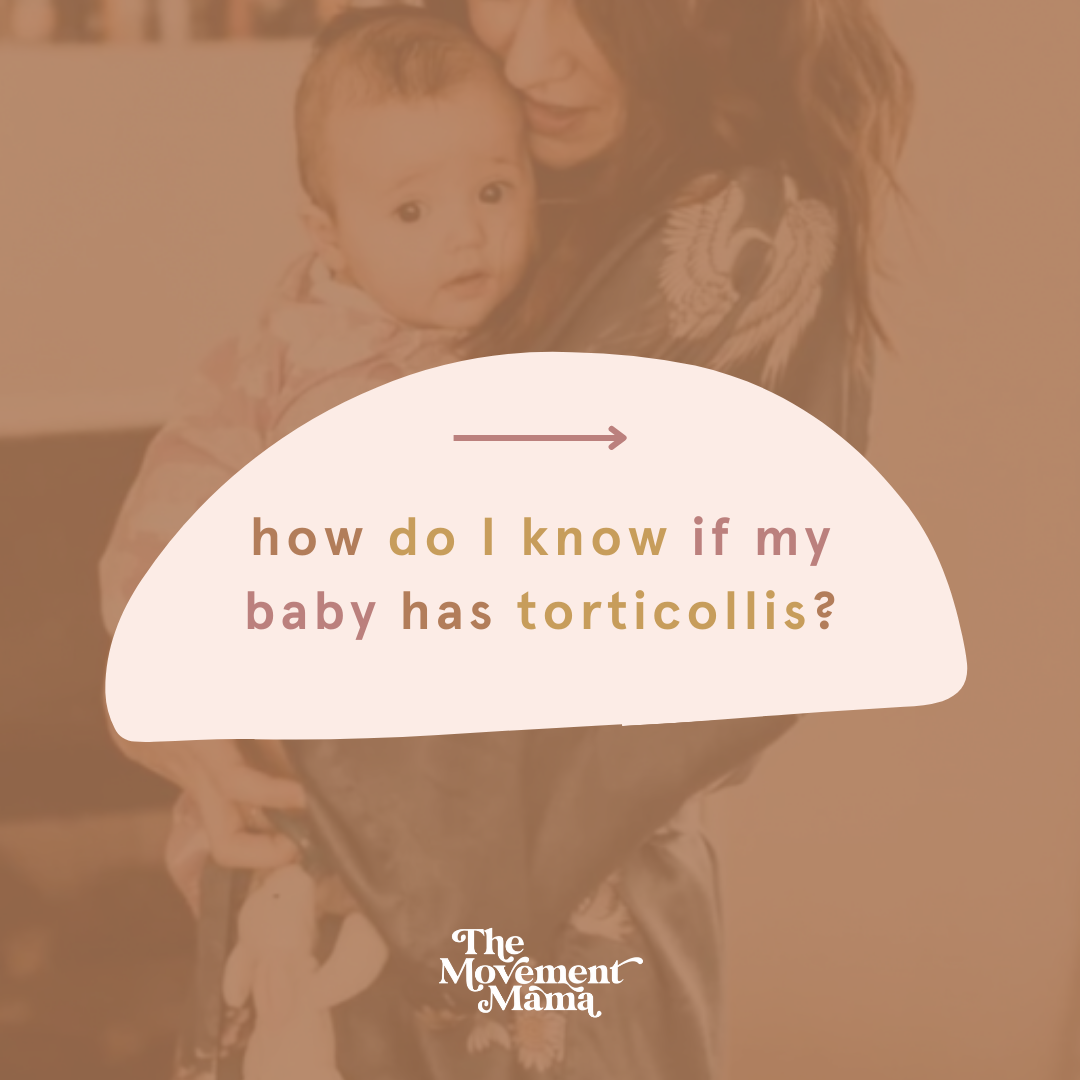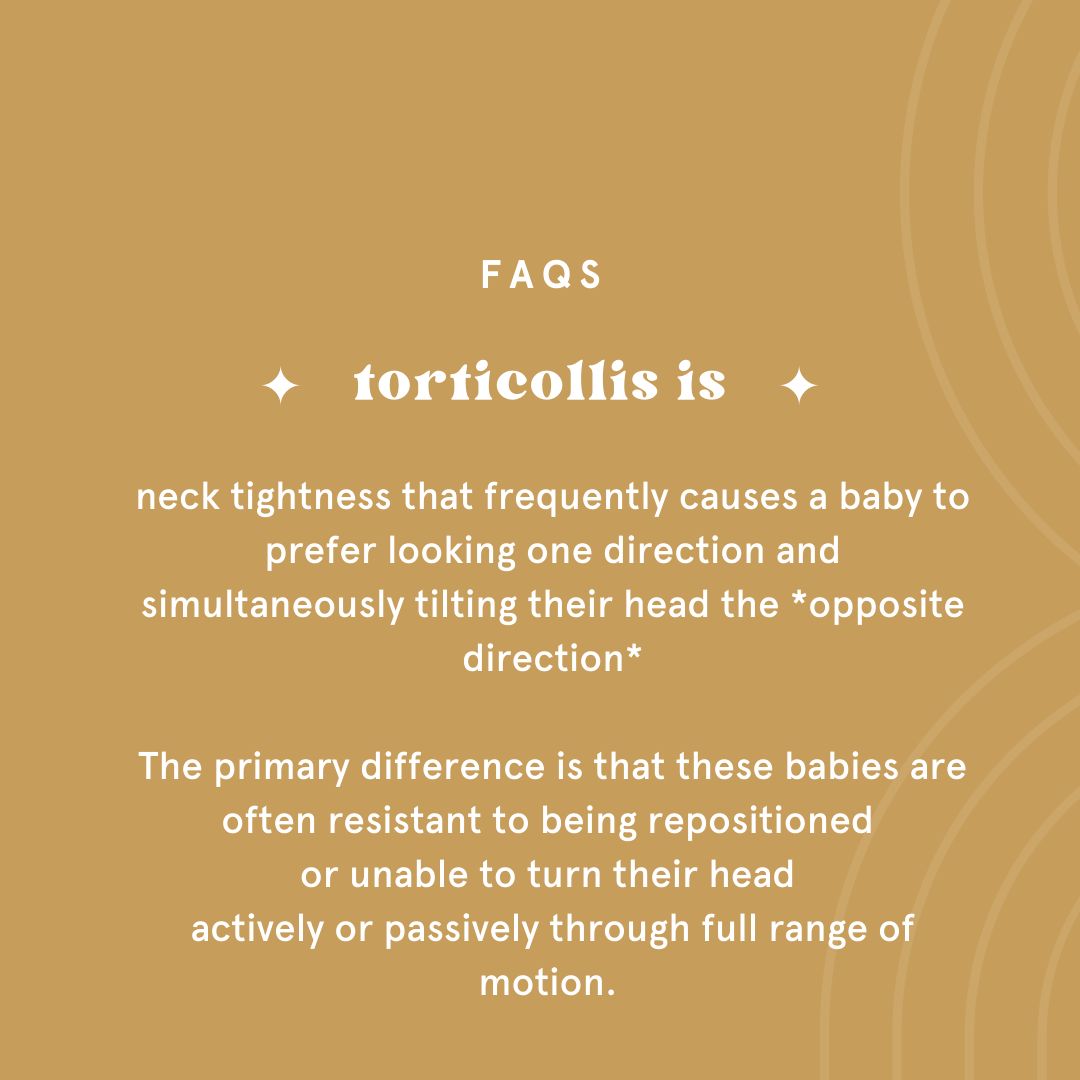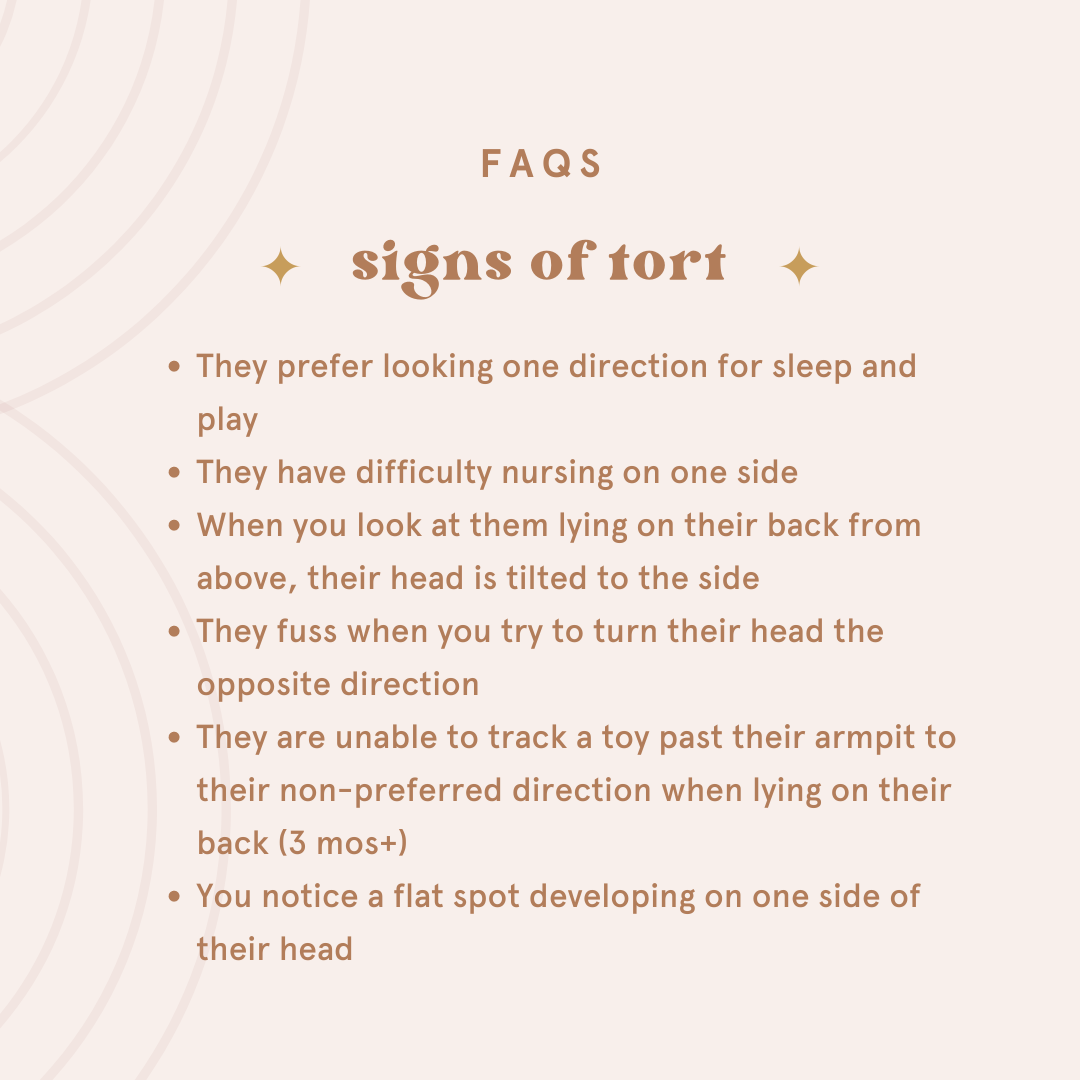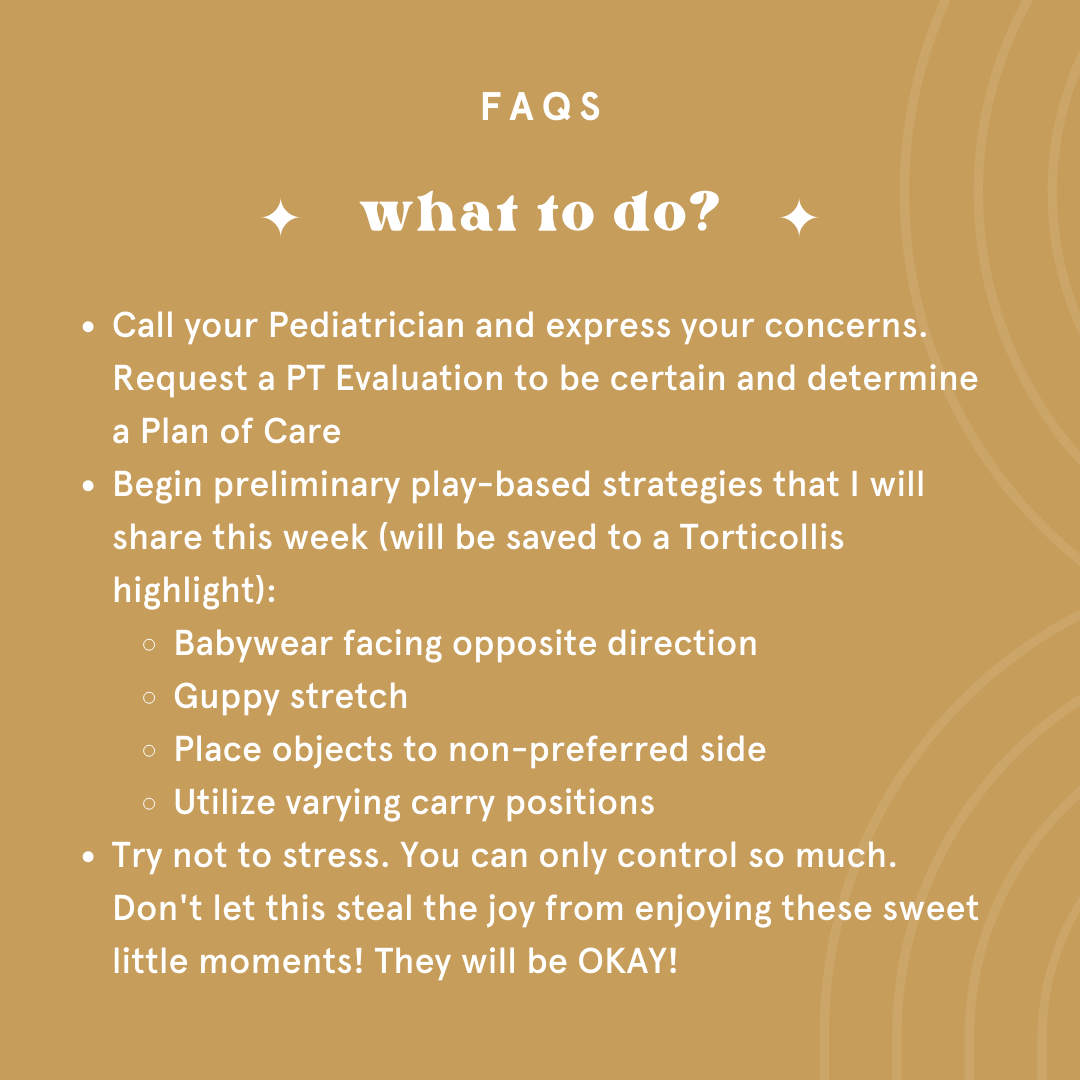Torticollis & Plagiocephaly 101
What do these words mean?? In recent years, the word Torticollis has caused quite the stir in the therapy community and is making its way into the Mommy-verse based on the increasing commonality of babies seen wearing helmets. In short, Torticollis is a tightening of the neck muscles on one side of your baby’s neck. The muscle affected causes the baby to prefer turning their head one direction and tilting it the opposite direction. Many babies are born with some tightness due to being cramped in your pelvic cavity in the last few weeks of gestation but with proper movement exploration, many resolve without the need for intervention.
When undetected, however, Torticollis can lead to Plagiocephaly: which is a skull malformation that causes one side of the head to be flattened. All of this feeds into a vicious cycle in which that flat spot becomes a nice little pillow for your babe to rest their head on, further promoting their preference for looking one direction and increasing their risk for needing skilled Physical Therapy intervention and helmet therapy.
For more resources like this, check out these other Movement Mama posts:
Torticollis Stretches You Can Do At Home
0-3 Month Motor Milestones
Gifts for the Taby: That Awkward Phase Where They're Squishy but Sassy
So why are we seeing such an increase in this relatively new diagnosis? I believe since the dawn of the Back to Sleep campaign, babies are no longer getting the opportunity to stretch their necks naturally by going to sleep on their tummy with their head facing one direction, waking, lifting their head, and turning it the opposite direction. But we ARE seeing a decreased risk of SIDS with back sleeping—so how can we fix this problem as mamas?! I bet you’d never guess I’d say this but....LOTS and LOTS of tummy time! Babies are essentially getting anywhere from 12-15 hours LESS of tummy time now that we practice safe sleep habits, so it is vital not only to your wee one’s head shape, but also their general development that you place them on their tummy as much as possible.
















